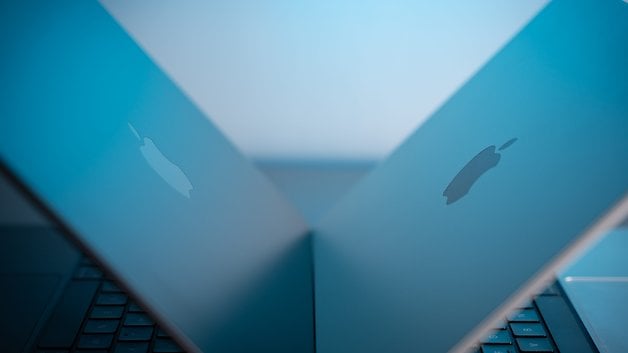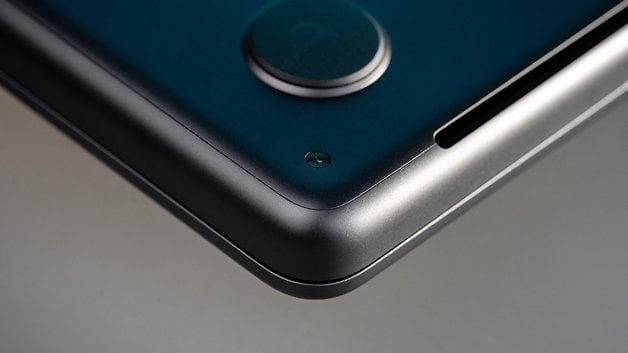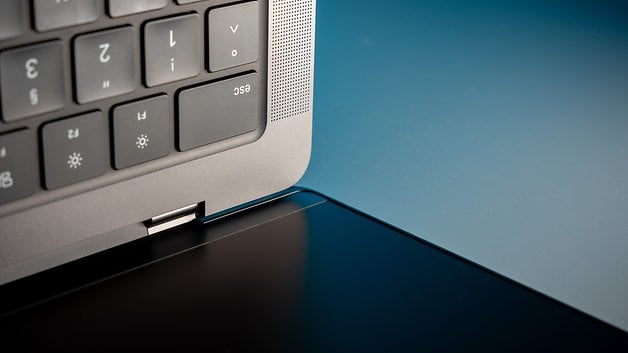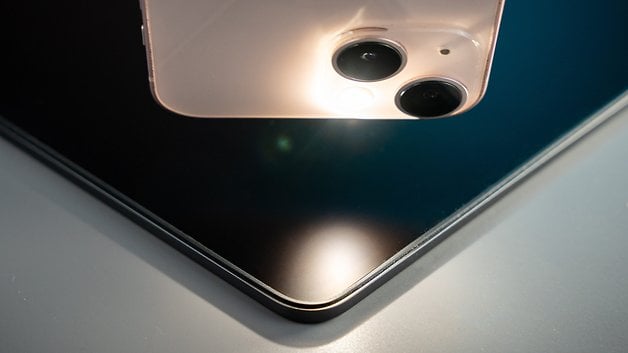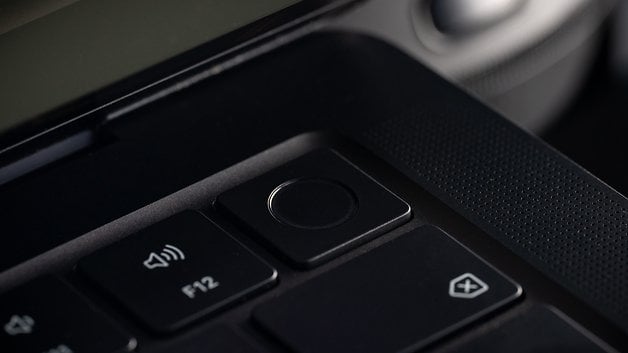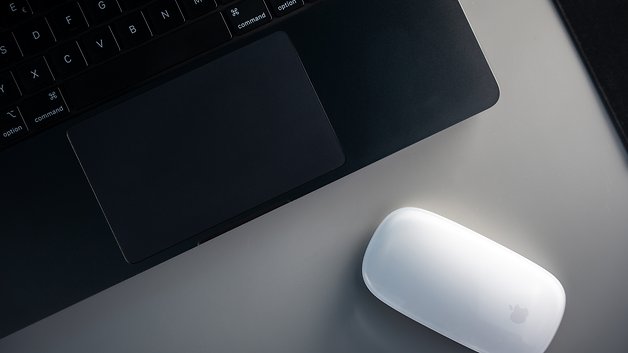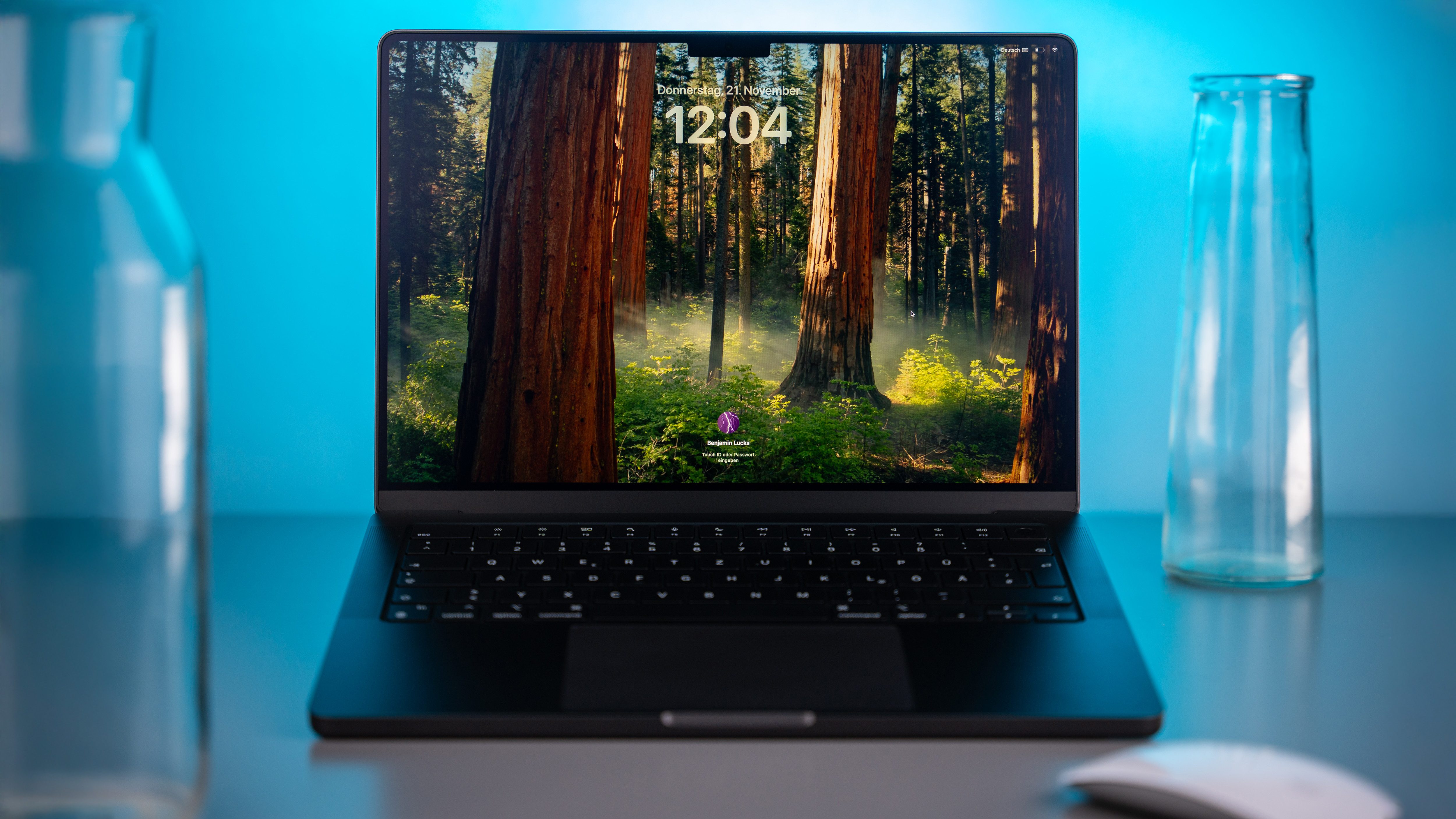
Life is unfair. The Mac Mini stole the show from the MacBook Pro in 2024! However, Apple’s most powerful MacBook also offers exciting innovations with Thunderbolt 5, a brighter display, and nano-texture glass. In this MacBook Pro review, we take a look at the model armed with the M4 SoC and 16 GB RAM. We also reveal why new customers should actually go for the latest model!
Good
- Base model is highly recommended thanks to 16 GB RAM
- Outstanding display, especially with the nano-texture option
- Very long battery life
- Wide range of connectivity options
Bad
- Quickly becomes a money pit with upgrades, …
- … the SSD and RAM are soldered
- Shows signs of wear quite quickly
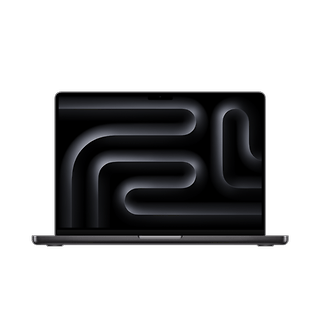
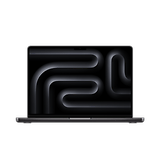
Apple MacBook Pro M4 14: All deals
The MacBook Pro in a nutshell
Although Apple is only updating the MacBook Pro model, it still offers some incentives to buy or upgrade from an older model. The basic model is now equipped with at least 16 GB of RAM, sporting a new option for nano-texture glass that makes the notebook suitable for outdoor use with an even higher brightness for the display. However, after the initial euphoria, taking a look at the configuration options does raise quite a few questions. This is because the upgrades tend to get very expensive and the permanently soldered RAM and SSD components cannot be upgraded later.
Design & Keyboard
At first glance, the new MacBook Pro with M4 chip is not really recognizable. Apple continues to rely on two case sizes that accommodate a 14-inch or a 16-inch display. Both cases are “unibody” in design and made from recycled magnesium. Fortunately, the matte black color variant is now also available in the cheapest option. Alternatively, the MBP is also available in silver.
Pros:
- Extremely high-quality workmanship.
- Wonderful keyboard and touchpad.
- Wide range of connectivity options, now also with Thunderbolt 5 (only with M4 Pro and M4 Max).
Cons:
- Keyboard shows wear and tear quickly.
- Keys tend to leave marks on the display.
- Quite large and heavy for a 14-inch notebook.
Apple revised the design of the MacBook Pro a few years ago and still remained with it until today. Unlike older Pro models, the manufacturer opted for a rather chunky case with sharp edges. Compared to 14-inch notebooks from other manufacturers, the MacBook Pro is bulky and, tipping the scales at around 1.6 kg, also quite heavy. If you’re looking for a lightweight and portable notebook, you’ll be better off with the MacBook Air (review) or models from other manufacturers.
However, the heavy weight and robust unibody chassis with its tiny gaps contribute to a very high-quality impression overall. To be honest, there is hardly any other piece of technology that I enjoy taking product photos of as much as Apple laptops. Apart from my personal preferences, the design of the MacBook Pro M4 also boasts advantages in everyday use.
Unlike the MacBook Air, Apple’s professional notebook is equipped with an active fan. This produces a very perceptible noise when I crank it up to the maximum via software. However, in everyday life, it very rarely starts up and then rarely goes at the maximum speed. Another advantage of the professional MacBook? The comparatively high number of connectivity options. Here, Apple offers further upgrade options compared to its predecessor:
MacBook Pro M4 connectivity options compared
| MacBook Pro M4 | MacBook Pro M4 Pro & M4 Max | |
|---|---|---|
| Left side |
1 x MagSafe 3 2 x Thunderbolt 4 / USB 4 1 x 3.5mm jack (In / Out combined) |
1 x MagSafe 3 2 x Thunderbolt 5 / USB 4 1 x 3.5mm jack (In / Out combined) |
| Right side |
1 x HDMI 2.1 1 x Thunderbolt 4 / USB 4 SD card reader |
1 x HDMI 2.1 1 x Thunderbolt 5 / USB 4 SD card reader |
| Wireless |
WLAN 6E Bluetooth 5.3 |
WLAN 6E Bluetooth 5.3 |
Together with the M4 Pro and M4 Max, the MacBook Pro supports the new Thunderbolt 5 standard. This enables particularly fast data rates. In our review scenarios, the speed of external storage media even exceeded that of internal SSDs in some cases. Thunderbolt 5 also offers advantages when connecting external displays. As things get a little more complicated here, here is another table to refer to:
MacBook Pro M4 display support
| M4 and M4 Pro | M4 Max | |
|---|---|---|
| Internal display with full resolution + | – 2 external displays with 6K at 60 Hz via Thunderbolt – 1 external display with 6K at 60 Hz via Thunderbolt + 1 external display with 4K at 144 Hz via HDMI – 1 external display with 8K resolution at 60 Hz – 1 external display with 4K resolution at 240 Hz |
– 3 external displays with 6K at 60 Hz via Thunderbolt + 1 external display with 4K at 144 Hz via HDMI (4 in total) – 2 external displays with 6K resolution at 60 Hz via Thunderbolt + external display with 8K resolution at 60 Hz – 2 external displays with 6K resolution at 60 Hz and 1 external display with 4K resolution at 240 Hz via HDMI |
This makes the MacBook Pro even more interesting as a central workstation for video editing or music production. If we were to think of the fact that Apple’s M1 could only handle one external display, this is a significant leap forward. Anyone using the MacBook Pro with M4 on the move will also enjoy particularly high-quality integrated input methods.
Even after a year, I still love typing on Apple’s illuminated Magic Keyboard. It’s still practical that Apple replaced the touch bar with a series of function keys. The typing experience is responsive and not too loud. Overall, it reminded me of a mixture of the MX Keys and Apple’s external Magic Keyboard.
Directly below the keyboard is a huge touchpad that supports Force Touch. For instance, you can look up words by pressing down on the touchpad particularly hard. Multi-touch gestures speed up work with MacOS even more and the precision of the touchpad is something you won’t find in the Windows world.
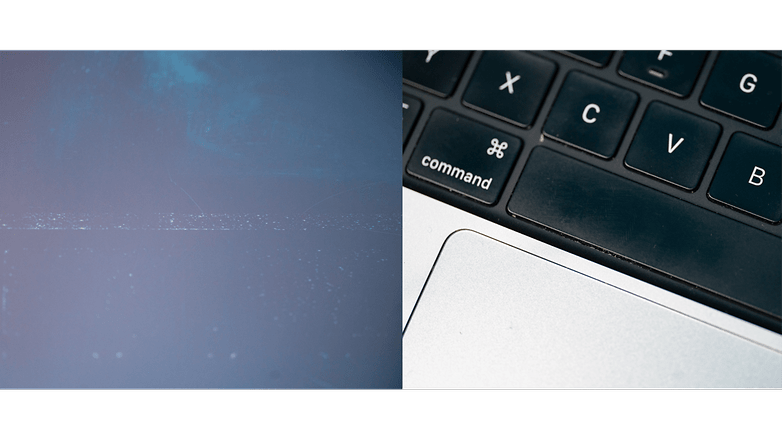
What really bothered me about the MacBook Pro’s keyboard, however, is how quickly the keys wear out. After about a year, the space bar has already lost its rough surface and the keys seem a little more slippery overall. Admittedly, I also type a lot as I estimate churning out between 3,000 and 6,000 words daily. Of course, this doesn’t affect its functionality.
Display
Apple uses new displays in the MacBook Pro but according to the technical specifications, these are still Liquid Retina XDR displays, which measure either 14.2 or 16.2 inches across diagonally. With a pixel density of 254 ppi, content looks nice and sharp, but the new screens now achieve a new peak brightness value of 1,600 nits for HDR content. A 120 Hz refresh rate and the availability of nano-texture glass round off the overall package.
Pros:
- Significantly better for outdoor work.
- Perhaps the best notebook displays ever.
Cons:
- Notch is still not used sensibly.
- Adaptive refresh rates reach up to only 47.95 Hz.
Here is something exciting: Apple is apparently switching to panels with Quantum Dot technology in the MacBook Pro. Compared to the KSF phosphor films which the company previously relied on, this results in a wider color palette and better motion display. Although this has not yet been confirmed officially, it fits in with rumors regarding new external Apple displays with Quantum Dot technology. What sounds good at first, however, cannot really be observed in a direct comparison.
Yes, the Liquid Retina XDR display in last year’s MacBook also impressed with a high pixel density, smooth content display thanks to the 120 Hz refresh rate, and coverage of the large P3 color space. Color correction in image editing or color grading when filming can be carried out very well. As there really isn’t much that can be improved here, Apple made improvements in a different and very relevant area.
With a peak brightness of up to 1,600 nits for HDR content and the availability of nano-texture glass, Apple made the MacBook more suitable for working outdoors. Reflections are significantly reduced and content looks even more vivid. Unlike the iMac with M4 (review), the nanotexture option is available in every configuration and I would actually always recommend it despite having to fork out an additional $150.
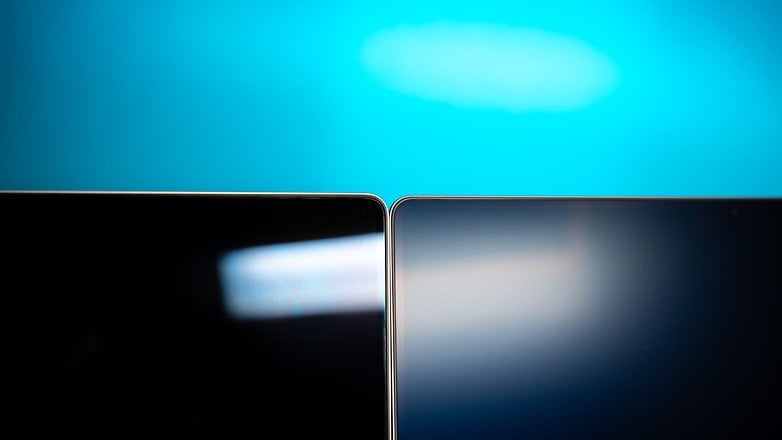
However, I can think of two disadvantages in the display category: One, there is still a clearly visible notch in the display. Yes, Apple hides it very well in the operating system in most cases since the display format features a 3:2 ratio, the notch is not even noticeable when watching a movie. However, it still houses nothing but a webcam. I would still like to see Face ID here in the future.
The second point of criticism could be the limitations in the adaptive refresh rate. It achieves a minimum of 47.95 Hz—if it were up to 1 Hz, as with the LTPO display used in the iPad Pro (review), it would be more energy-efficient. However, since the battery life of the MacBook Pro is still very long, this hardly matters.
Software
With MacOS 15.01 Sequoia, Apple delivers the MacBook Pro with M4 with its latest operating system. Unlike iPadOS, this is a fully-fledged desktop operating system that is fully extendable via third-party software. Apple is also working on debuting its AI assistant, Apple Intelligence, in MacOS in the USA. However, it is not yet available outside of the USA. As this review is already rather lengthy, let’s continue with other aspects of the MacBook Pro!
Performance
At press time of my review, the MacBook Pro is the top performer in the Apple world. You have the option of upgrading the notebook with the M4 Max SoC, 128 GB unified RAM, and 8 TB SSD storage. However, the price here also rises to $7,349. Our base model with the M4 SoC, 16 GB RAM, and 1 TB storage is available for at $1,949 a pop.
Pros:
- Solid performance even for the base model.
- 16 GB RAM as standard.
Cons:
- Hardly upgradeable, even the SSD is soldered on.
- All upgrades are very expensive.
- No WiFi 7 connectivity.
For this review, Apple loaned us the MacBook Pro with the base M4 SoC, 16 GB RAM, and 1 TB storage space. Only the SSD and the nano-texture glass were added as upgrades. The price has already risen to $1,949 by then. This configuration results in a performance level that is suitable for perfunctory image editing and simple video editing with a little patience. However, as the benchmark comparison shows, the M4 lags behind, especially in terms of graphics performance.
Benchmark table
| test | MacBook Pro M4 | MacBook Pro M4 | iMac M4 | Samsung Galaxy Book 4 Edge (SD X Elite) | MacBook Air M3 | MacBook Pro M3 Pro | MacBook Pro M3 Max |
|---|---|---|---|---|---|---|---|
| Geekbench 6 CPU (Single / Multi) | 3,829 / 14,936 | 3,829 / 14,936 | 3,845 / 14,551 | 2,630 / 13,314 | 3,153 / 12,033 | 3,130 / 14,243 | 3,092 / 19,315 |
| Geekbench 6 GPU | 38,134 | 38,134 | 35,697 | – | 30,457 | 43,050 | 76,507 |
| Cinebench R32 | 3,870 | 3,870 | 4,370 | – | 3,314 points | 5,426 points | 19,671 points |
| 3D Mark Nomad Light | 3,946 | 3,946 | 3,549 | – | – | – | |
| AS SSD Benchmark 2.0 read | 2,924 Mb/s | 2,924 Mb/s | 2,990 Mb/s | – | 3,050 Mb/s | 5,000 Mb/s | 5,600 Mb/s |
| AS SSD Benchmark 2.0 write | 2,962 Mb/s | 2,962 Mb/s | 3,268 Mb/s | – | 3,400 Mb/s | 5,600 Mb/s | 7,500 Mb/s |
A comparable setup to the reviewed Mac Mini would already cost $2,949 for the MacBook Pro. Buying a mobile workstation instead of the Mac Mini would therefore cost $850 more. Our Mac Mini with M4 Pro review unit included a Core upgrade, 48 GB RAM, and 1 TB SSD storage, making it almost fully equipped, Apple allows even more upgrades for the MacBook Pro.
You can upgrade the M4 Max with a maximum of 16 CPU cores, 40 GPU cores, and 16 NPU cores, as well as a memory bandwidth of 546 GB/s. However, the price rises quickly and only ends at just over $7,000 for the 14-inch model. However, as our MacBook Pro with M3 Max review from last year showed, such configurations do make perfect sense for special applications as they provide sufficient performance for several years.
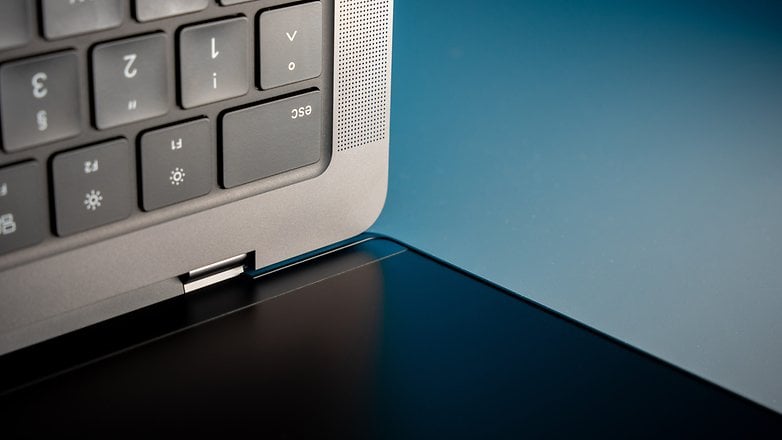
In the base model for $1,599, the MacBook Pro already offers a high level of performance, especially as Apple delivers the notebook with a minimum of 16 GB of RAM instead of 8 GB. Unlike the iMac with M4 and the new Mac Mini, there is no longer an option with 256 GB of internal memory. In my opinion, the 16 GB RAM and 512 GB internal memory variant is quite suitable for everyday use.
However, you should think carefully about whether the minimum configuration is sufficient for your needs with the MacBook Pro down the road. This is because Apple soldered both the RAM and the mass storage to the motherboard. Upgrades are therefore very difficult to carry out.
I would also criticize the type of wireless technologies used. While Apple already uses WiFi 7 in the iPhone, only WiFi 6E is available here. Together with Bluetooth 5.3, you don’t have the latest wireless standards at your disposal.
Battery and charging
According to the manufacturer, Apple’s new M4 SoC has a battery life of 24 hours—an increase of two hours compared to the previous model. However, these figures refer to video streaming and may be difficult to achieve in “real life”. Here, however, the runtimes are still very good, charging is performed via MagSafe 3, while fast charging once again costs more.
Pros:
- Very good battery life.
- MagSafe continues to be a very convenient and safe charging option.
- Fast charging function upon request.
- Surprise! The battery can be replaced.
Cons:
- M4 Pro and M4 Max feature a shorter battery life.
In the 14-inch model we reviewed, Apple equipped the MacBook Pro with a 72.4 Wh battery—the 16-inch model has a 100 Wh battery. This means that Apple has reached the limit for notebook batteries permitted in this country in the larger MacBook Pro. However, as the 16-inch model has a larger display and cannot be equipped with the more efficient base M4, the runtimes here are on par with the smaller model.
In my review, I used about 30% of the battery in 2.5 hours running at maximum brightness. I mainly typed documents over the Internet, but also edited photos in Lightroom. With this kind of usage pattern, the battery should last a little over 7.5 hours in office mode. This is a very good figure, especially as I switched off the display’s adaptive brightness control. However, I doubt whether there are any noticeable advantages here if you are migrating from the previous model. The MacBook Pro battery life is already very good since last year.
However, you should bear this in mind if you need more power: Runtimes decrease if you were to opt for more powerful configurations. According to the manufacturer, the M4 Pro takes two hours off the battery life, while the M4 Max takes four hours off. It will be exciting to see when Apple brings the 100 Wh battery from the 16-inch model into the smaller MacBook. Other manufacturers do it too!
I was pleasantly surprised by how easy it is to replace the notebook battery. According to the repair manual, you only have to loosen screws, clips, and plugs. If the battery dies after a few years, it can be easily replaced. This could be particularly relevant if you spend $20 on the fast charging power adapter. With the 96 W power adapter, the MacBook Pro charges from 0 to 50 percent in 30 minutes. Depending on Apple’s temperature management, however, this could be at the expense of charging cycles.
Technical specifications
| Technical specifications | |
|---|---|
| Device | Apple MacBook Pro M4 14″ |
| Image |  |
| SoC |
|
| Unified memory | |
| Display |
|
| Dimensions & weight |
|
| Connections |
|
| Wireless | |
| Battery |
|
| RRP |
Conclusion
Rarely has it made so much sense to go for the basic MacBook Pro model! Thanks to the standard 16 GB of unified RAM and 512 GB of internal memory, you can buy a mobile workstation suitable for everyday use for $1,599. Of course, this is still a lot of money, but even the base model we reviewed offers an exceptionally good price-to-performance ratio.
As a high-end laptop, the MacBook Pro hardly left anything to be desired. The display is even brighter than in the previous model, apparently uses better technology with Quantom Dot, and can now be configured with nano-texture glass. The fact that Apple offers anti-glare displays in all configurations is fair and I like it better than the current iMac with M4 SoC. This makes the MacBook Pro much more suitable for working outdoors, which is extremely welcome.
In addition to the display, there are particularly high-quality and precise input options, a high-quality aluminum unibody chassis, and a very wide range of connectivity options. Thunderbolt 5 is a brand-new transmission standard that is only available with the M4 Pro and M4 Max. If you were to aim for these models and need more RAM and SSD storage, you will also have to be prepared to dig deep into your pockets.
In addition to the very positive overall impression, there are also typical Apple criticisms: Both the unified RAM and storage memory are soldered onto the motherboard, and the manufacturer makes memory upgrades very expensive. However, since the MacBook Pro, unlike the Mac Mini and the iMac, offers features that are not available from the competition in this combination, it is currently the best M4 product for me and also the best MacBook on the market—even in the base model!

